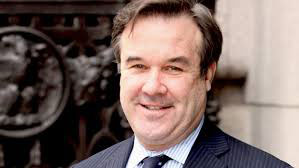Happy Birthday America! Your Infrastructure is Calling
Jul 04, 2018It’s almost biblical how that imaginative power of those who in a short time created America’s infrastructure has driven this country’s business growth for decades and allowed it to produce and maintain a world-leading financial engine.
But the U.S. now may be headed for an economic apocalypse if our infrastructure’s critically needed upgrade continues to lack dedicated vision, iconic projects and, most importantly, public leadership.
Let’s start with vision, and let’s make it suitably inspirational. The U.S. now invests 1.3% of GDP in infrastructure, or about $250 billion a year. If we were to double that level and maintain it for 10 years, we would produce for the next generation a future of enormous opportunity—a total cumulative added market size of nearly $3 trillion.
Not all may agree, but that doubled investment to provide our children and grandchildren an extraordinary foundation to seize world-class opportunities is a great vision. It unleashes incredible levels of imagination and energy to build what would be an operating system for our country.
Next is the needed focus on strategic projects, basic building blocks that will launch us into the future and provide ways to stretch industry capabilities—if we choose well and execute successfully.
How better to highlight construction’s vitality and ingenuity than by creating ways to showcase new materials like low-carbon cement and cross-laminated timber and technologies such as artificial intelligence, 3D printing and data analytics.
Great projects, like the Hoover Dam and the Golden Gate Bridge, are magical. They created new companies and industries, new ways of seeing the world and pride in a country’s enterprise and perseverance.
A project like the New York City region’s critical Gateway transportation upgrade fits this template—the innovation and inputs required will light up the cranial circuit boards of a generation of engineers and create jobs in nearly 100 congressional districts, not to mention long-term career paths since O&M spend is seven times the project’s capital cost.
Leadership is Lacking
But it’s government leadership that is most desperately lacking—what absolutely determines how we prioritize, legitimize and optimize our investments.
Infrastructure is a public good, but with $1-trillion annual budget deficits—when it looks more obvious that needed levels of investment must come from pension funds and private equity managers—we still need public-sector advocates to champion projects, insure their speedy completion and monitor whether we’re getting what we pay for.
Make no mistake. We will not double our investment without great leadership at all levels, most particularly on Capitol Hill and in the White House.
Pension funds alone have more than $17 trillion in assets, 10% of which could easily be invested in infrastructure. We will lose any hope of gaining the discipline and imagination of private-sector investors if there is no sustained partnership with dynamic public leaders.
Once we have the operating system for an infrastructure plan in place, there remains one more task: inserting the genius of democracy into the equation.
We need to bring to bear the power and ingenuity of “citizen users” of infrastructure to identify needed improvements and advocate for solutions. Those computers in our hands give everyone the key tool needed to turbocharge regular participation.
The former top-down system—where we pay taxes and they decide what we get, with periodic voting in between—will be replaced by something much more complicated but insightful. It is a system where user preferences are actively sought and continuously drive everything from project selection and design to how we improve, pay for and value what we build.
We must hurry to get there. Defining and measuring benefits and mobilizing citizens to push for what we can create in our communities, our states and our country is an urgent strategic priority.
“Where there is no vision the people perish,” the Bible says. Let’s use all tools at our disposal to mobilize our best ideas and generate the kind of robust investment in infrastructure that will transform our country.
By Norman F. Anderson, CEO CG/LA Infrastructure

Winners will be recognized at CG/LA’s Strategic Infrastructure Leadership Forum in Dallas on Oct. 25.
He can be reached at [email protected].
Editor’s note: The article was first published in the Engineering News-Record (ENR) on June 28, 2018. www.enr.com
© Copyright 1999–2024 American Journal of Transportation. All Rights Reserved


